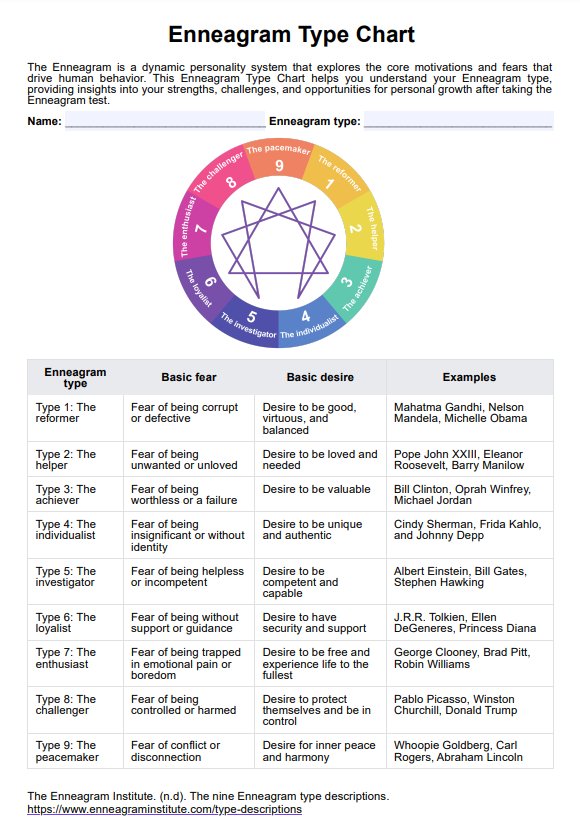Yes, the Enneagram recognizes that individuals can resonate with aspects of more than one type, allowing for an understanding of their core desires.

Enneagram Type Chart
Help clients discover themselves with the Enneagram Type Chart. Guide them to understand their motivations, improve relationships, and achieve personal growth.
Use Template
Enneagram Type Chart Template
Commonly asked questions
While the Enneagram primarily focuses on personality, it provides a holistic framework that extends beyond traits, touching on a person's core desires and motivations in various life aspects.
The Enneagram is widely embraced by individuals seeking personal growth and self-development as well as professionals in psychology, leadership, and various fields involving understanding human behavior.
EHR and practice management software
Get started for free
*No credit card required
Free
$0/usd
Unlimited clients
Telehealth
1GB of storage
Client portal text
Automated billing and online payments











